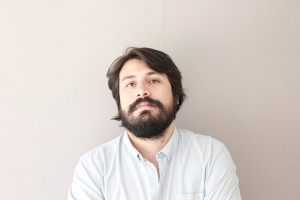“Leave behind the old digital technology. Explore new and simple ways to represent information and make any kind of graphics quickly.”
Jose Duarte is a Colombian designer, magister in communication, Ledfish co-founder, TELL co-founder and Visual thinking school Colombia director.
 Unlike most of the infographics we see today, his data visualizations aren’t high-quality computer-aided; they’re handmade using simple items like balloons, tape and rubber balls. Using ordinary materials he has experimented with various visualization techniques from area charts to bubble graphs and ven diagrams in diverse scenarios as business, art, street interventions and even astronomy.
Unlike most of the infographics we see today, his data visualizations aren’t high-quality computer-aided; they’re handmade using simple items like balloons, tape and rubber balls. Using ordinary materials he has experimented with various visualization techniques from area charts to bubble graphs and ven diagrams in diverse scenarios as business, art, street interventions and even astronomy.
Now, He is exploring simple ways to visualize information quickly and easily and his work – particularly the Handmade visualization toolkit – has inspired and encouraged people to approximate for the first time to data visualization.
His work has been published by Gestalten’s book Visual Storytelling and has appeared in worldwide specialized magazines and blogs as Owni, Marie Claire, info-aesthetics, brainpickings and Co.Design among others.
About the #easydataviz project
Today, the visualization discipline has made a huge emphasis on the computer. Software development, a lot of numbers and complex programming are immediately associated with data visualization. But it could affect negatively the discipline. Often visualization specialists forget it’s not about making information visualization, it’s about making information visible. It seems to be a complicated discipline but it is because they centered the speech in the machine instead of the information itself. I think visualization experts sometimes forget the heart of visualization: make ideas clear, clarify concepts and change minds. To make a great visualization you don´t need a computer, you just need your head and your hands.
Happily, today there are a lot of people working with a different approach to visualization using the handmade and DIY (do it yourself) concept. A powerful idea is behind this new approach, it means you don’t need to be an expert to make a great visualization, you just need an idea and a sharpie or any object. Actually, most infographics online could be redrawn with a Sharpie on typing paper and say just as much. Hans Rosling exemplifies this point in an extraordinary way with his TED talk using just a few stones or simple IKEA boxes to talk about a complex topic as world population. This is a central point. People often ask me how to be precise in graphics by hand. My response is while it’s important to be precise in the proportions, It’s more critical the idea is clear.
Finally, there is another interesting consequence of the analogue-physical approach. Analogue representations become a mediation instead of a simple instrument. It generates an experience between observer and information. Statistics aren´t something you can touch, turning them into abstract physical shapes can help to understand data and more important, have a new and important experience with it. It’s important to materialize information because the experience is maximized and more critical when you can touch it.

Leave a Comment
Let us know your thoughts on this post but remember to place nicely folks!